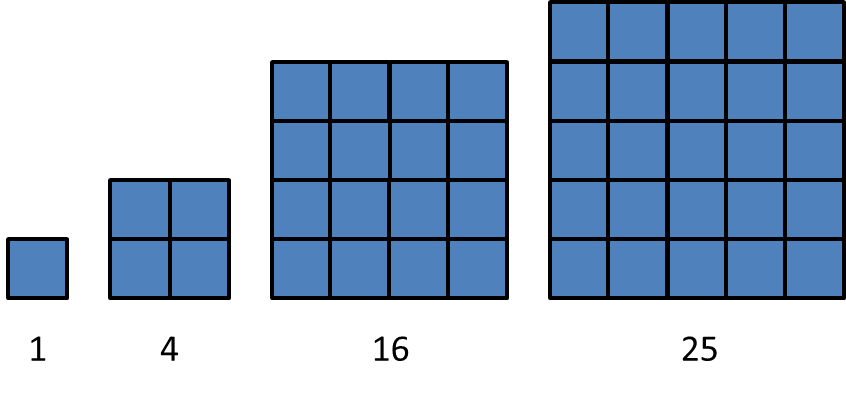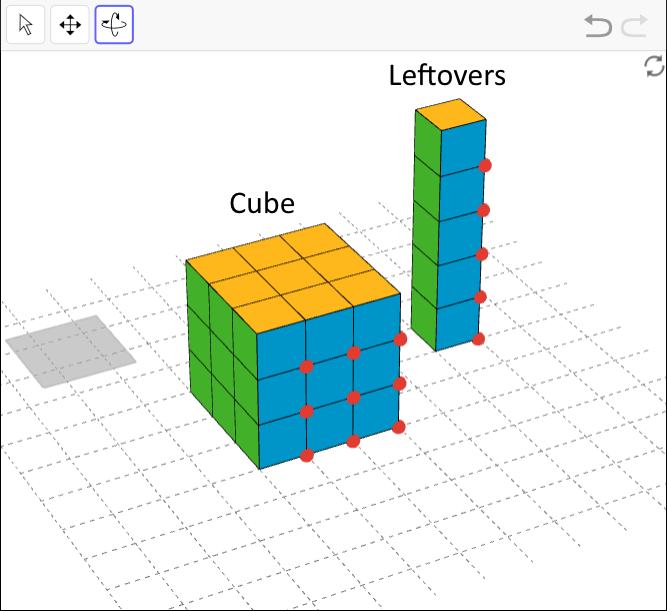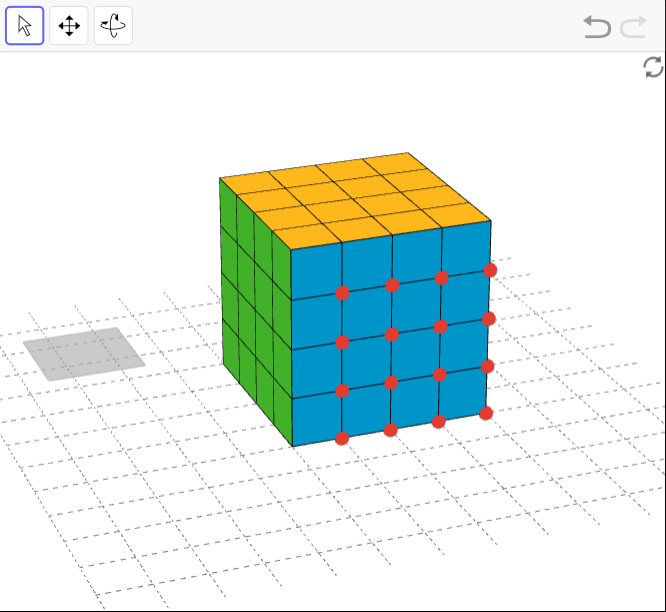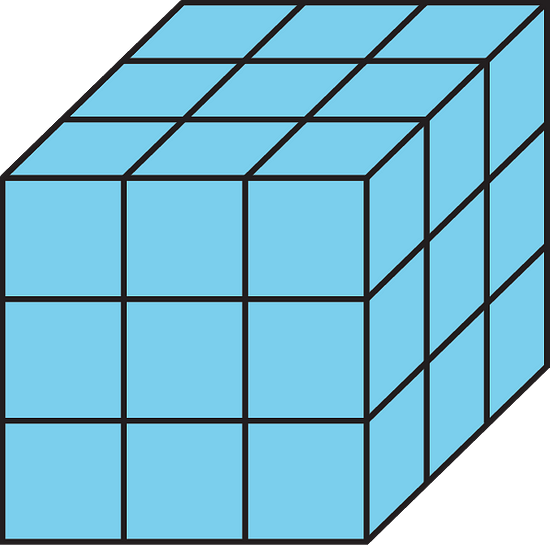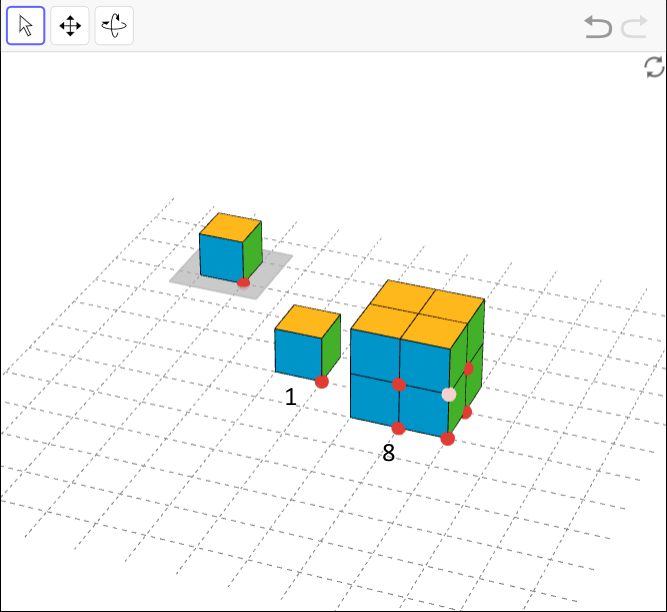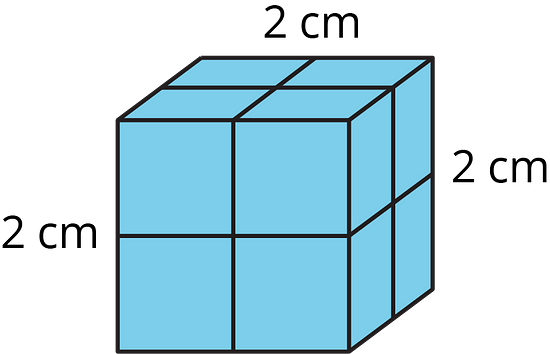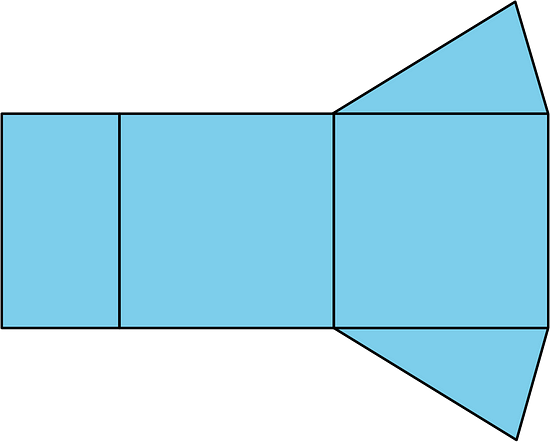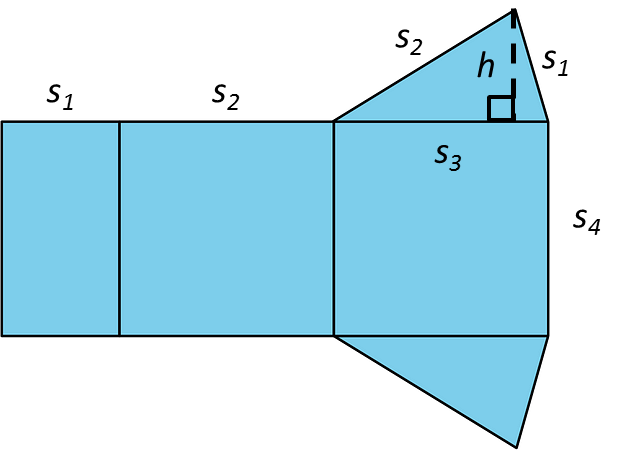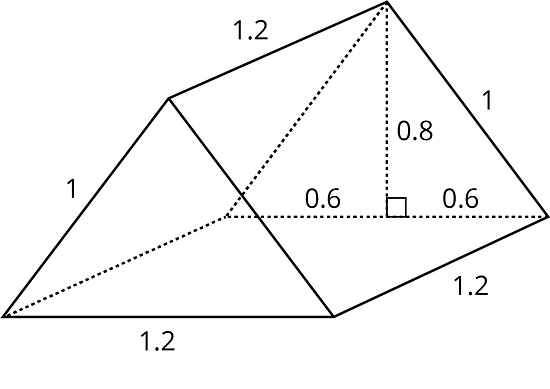

Illustrative Mathematics Unit 6.1, Lesson 17: Squares and Cubes
Related Topics:
Math Worksheets
Learn more about squares, cubes, and how exponents relate to the area or volume of squares and cubes. After trying the questions, click on the buttons to view answers and explanations in text or video.
Return to the list of Illustrative Math lessons
Squares and Cubes
Let’s investigate perfect squares and perfect cubes.
Illustrative Math Unit 6.1, Lesson 17 (printable worksheets)
17.1 - Perfect Squares
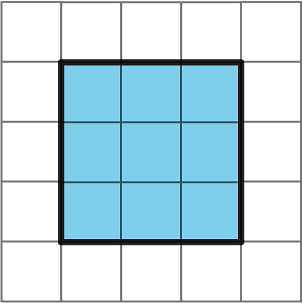
1. The number 9 is a perfect square.
Find four numbers that are perfect squares and two numbers that are not perfect squares.
2. A square has side length 7 km. What is its area?
3. The area of a square is 64 sq cm. What is its side length?
17.2 - Building with 32 Cubes
Open the applet. Drag on the red point on the cube to move it, and click on the point to switch between vertical and horizontal movement. The gray square will give you 32 cubes. Use as many of these as you need to build the largest single cube you can. Each small cube has a side length of 1 unit.
1. How many snap cubes did you use?
2. What is the side length of the cube you built?
3. What is the area of each face of the built cube? Show your reasoning.
4. What is the volume of the built cube? Show your reasoning.
Open the next applet. The gray square will give you 64 cubes. (There is an error in the applet title.) Use as many cubes as you need to build the largest single cube you can.
1. How many snap cubes did you use?
2. What is the edge length of the new cube you built?
3. What is the area of each face of the built cube? Show your reasoning.
4. What is the volume of the built cube? Show your reasoning.
17.3 - Perfect Cubes
1. The number 27 is a perfect cube.
Find four other numbers that are perfect cubes and two numbers that are not perfect cubes.
2. A cube has side length 4 cm. What is its volume?
3. A cube has side length 10 inches. What is its volume?
4. A cube has side length s units. What is its volume?
17.4 - Introducing Exponents
When we multiply two of the same number together, such as 5 × 5, we say we are squaring the number. We can write the expression as 52. Because 5 × 5 is 25, we can write 52 = 25, and we say, "5 squared is 25". We can also say that 25 is a perfect square. The raised 2 in 52 is called an exponent.
When we multiply three of the same number together like 4 × 4 × 4, we say we are cubing the number. We can write it as 43. Because 4 × 4 × 4 is 64, we can write 43 = 64, and we say, "4 cubed is 64". We can also say that 64 is a perfect cube. The raised 3 in 43 is also an exponent.
Exponents are also used as shorthand for units of area (square units) and units of volume (cubic units).
A square with side length 5 inches has area of 25 square inches, which we can write as 25 in2.
A cube with edge length 4 centimeters has a volume of 64 cubic centimeters, which we can write as 64 cm3.
For these questions, make sure to include correct units of measure as part of each answer.
- A square has side length 10 cm. Use an exponent to express its area.
- The area of a square is 72 sq in. What is its side length?
- The area of a square is 81 m2. Use an exponent to express this area.
- A cube has edge length 5 in. Use an exponent to express its volume.
- The volume of a cube is 63 cm3. What is its edge length?
- A cube has edge length s units. Use an exponent to write an expression for its volume.
The number 15,625 is both a perfect square and a perfect cube. It is a perfect square because it equals 1252. It is also a perfect cube because it equals 253. Find another number that is both a perfect square and a perfect cube. How many of these can you find?
Lesson 17 Summary
When we multiply two of the same numbers together, such as 5 × 5, we say we are squaring the number. We can write it like this: 52
Because 5 × 5 is 25, we can write 52 = 25, and we say, "5 squared is 25".
When we multiply three of the same number together like 4 × 4 × 4, we say we are cubing the number. We can write it as 43.
Because 4 × 4 × 4 is 64, we can write 43 = 64, and we say, "4 cubed is 64".
We also use this notation for square and cubic units.
A square with side length 5 inches has area 25 in2.
A cube with edge length 4 centimeters has a volume 64 cm3.
To read 25 in2, we say "25 square inches", just like before.
The area of a square with side length 7 kilometers is 72 km2. The volume of a cube with edge length 2 millimeters is 23 mm3.
In general, the area of a square with side length s is s2, and the volume of a cube with edge length s is s3.
Glossary Terms
cubed
We use the word cubed to mean "to the third power". This is because a cube with side length s has a volume of s × s × s, or s3.
exponent
In expressions like 53 and 82, the 3 and the 2 are called exponents. They tell you how many factors to multiply. For example, 53 = 5 × 5 × 5, and 82 = 8 × 8.
squared
We use the word squared to mean "to the second power". This is because a square with side length s has an area of s × s, or s2.
Practice Problems
1. What is the volume of this cube?
2. a. Decide if each number on the list is a perfect square.
b. Write a sentence that explains your reasoning.
- 16
- 20
- 25
- 100
- 125
- 144
- 225
- 10,000
3. a. Decide if each number on the list is a perfect cube.
b. Explain what a perfect cube is.
- 1
- 3
- 8
- 9
- 27
- 64
- 100
- 125
4. a. A square has side length 4 cm. What is its area?
b. The area of a square is 49 m2. What is its side length?
c. A cube has edge length 3 in. What is its volume?
5. Prism A and Prism B are rectangular prisms. Prism A is 3 inches by 2 inches by 1 inch. Prism B is 1 inch by 1 inch by 6 inches.
Select all statements that are true about the two prisms.
A: They have the same volume.
B: They have the same number of faces.
C: More inch cubes can be packed into Prism A than into Prism B.
D: The two prisms have the same surface area.
E: The surface area of Prism B is greater than that of Prism A.
6. a. What polyhedron can be assembled from this net?
b. What information would you need to find its surface area? Be specific, and label the diagram as needed.
7. Find the surface area of this triangular prism. All measurements are in meters.
The Open Up Resources math curriculum is free to download from the Open Up Resources website and is also available from Illustrative Mathematics.
Try the free Mathway calculator and
problem solver below to practice various math topics. Try the given examples, or type in your own
problem and check your answer with the step-by-step explanations.



We welcome your feedback, comments and questions about this site or page. Please submit your feedback or enquiries via our Feedback page.

